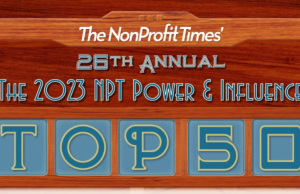Most married and cohabitating couples (61.5%) still jointly agree on donations but mutual decision-making has declined from 73.4% in 2005 and women alone are increasingly making the call in households on charitable giving.
Couples who decide together are typically older — in their 50s and beyond — and have children. Younger couples are more likely to make separate decisions about charitable giving or have one partner make the decision for the household.
The changing dynamics of donorship by couples during the 15 years from 2005 to 2020 was a featured presentation at AFPICON 2022 in Las Vegas this past May by The Women’s Philanthropy Institute Director Jeannie Infante Sager and Associate Director of Research Jacqueline Ackerman. The Institute is part of the Lilly Family School of Philanthropy at Indiana University/Purdue University, in Indianapolis, Ind. The presentation was based on The Women’s Philanthropy Institute’s report “Women Give 2021: How Households Make Giving Decisions,” which was funded by a grant from the Bill & Melinda Gates Foundation.
The research is significant to foundations and charities as roles in relationships evolve and individual and family pledges continue to account annually for about 70 percent of universal donations, Ackerman said after the presentation. She described as “surprising” the downward trend in joint decision-making about charitable giving because of gender equity advancements between couples but said it might be attributed to how couples break down household tasks.
“One theory is that couples see charitable giving as a bill-paying activity that’s already been allocated in the household,” Ackerman said. Another hypothesis is that people are marrying later and already have preferred causes they want to support, she said.
As fewer couples collaborate on giving than 15 years ago, decision-making is more frequently allocated to one partner: 15.3% of women decide on donations versus 6.5% of women in 2005; 12.1% of men solely decide on gifts compared to 3.9 % in 2005, according to data in the presentation.
Age and education also are factors on who decides to give in a household, the presenters said. Older couples — those older than 50 — are more likely to give jointly and younger couples are more likely to give separately or assign giving decisions to the man. The partner with a higher level of education also is more likely to make giving decisions.
The report was based on an online survey conducted in May 2020 of a general population sample of 2,115 married or cohabitating households, with 8.2% of the respondents identifying as same-sex couples. Among the key survey findings presented:
- Individuals have varying thresholds for how much they will give without consulting their partner: Men will give an average $901, women an average $311.
- Women-only deciding households increased from 6.5% in 2005 to 15.3% in 2020
- Men-only deciding households increased from 3.9% in 2005 to 12.1% in 2020.
- Households where couples separately make giving decisions – neither delegating to the other nor making a joint decision – decreased to 11.1% in 2020 from 16.2% in 2005.
To the extent possible, the survey was modeled after questions about household decision making and charitable giving in a 2005 survey instrument for the Philanthropy Panel Study, a module in the Panel Study of Income Dynamics, according to the report’s authors.
The report, which drew upon other published studies, concluded that decision-making styles appear to be linked to recent average amounts:
- When the man decides, annual gift-giving on average is largest ($1,981)
- Joint-deciders give the second largest average amount ($1,886)
- When the woman decides, the annual average gift is $1,561
- Separately-deciding households give the smallest average amount ($1,015)
The presenters did not elaborate on income and wealth of survey respondents but used another charitable giving study of 1,626 affluent couples — the 2021 Bank of America Study of Philanthropy — to illustrate that 48.9% of the couples jointly decided on donations and men (18.6%) solely decided charitable giving.
Other research, Ackerman said, shows donors can be very spontaneous, sending funds to support causes that abruptly arise and claim national or international attention.The survey and report on household giving also occurred at a time when simultaneous crises were occurring and shifts could be attributable to specific events, such as the COVID-19 pandemic and economic downturn, according to Ackerman and the report.
“People are capable of change and giving can be highly individual,” Ackerman said. For example, she said, women tend to be more motivated by empathy and altruism to give while men are inclined to donate to “more self-centered” causes where they see tangible evidence of their donation.
The report’s authors noted that fundraisers can’t make assumptions any longer that men in households control giving decisions. “This dynamic is changing as prominent women philanthropists like Dr. Priscilla Chan and MacKenzie Scott purposefully and visibly take a seat at the table. Instead of assuming, fundraisers should ask donors about their decision-making process, who else is involved in giving decisions, and what they can do to support donors in talking to their families about giving. And other members of the household, especially women, should not just be invited to the table but be listened to and respected,” according to the authors.










